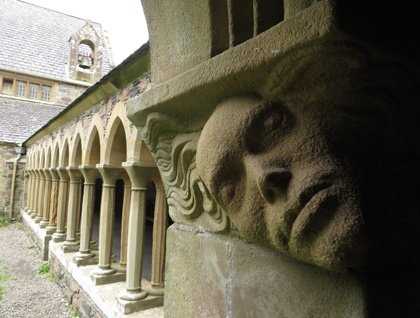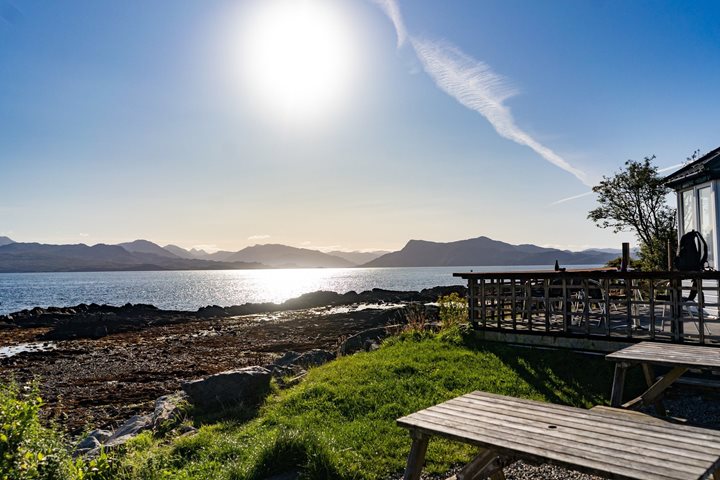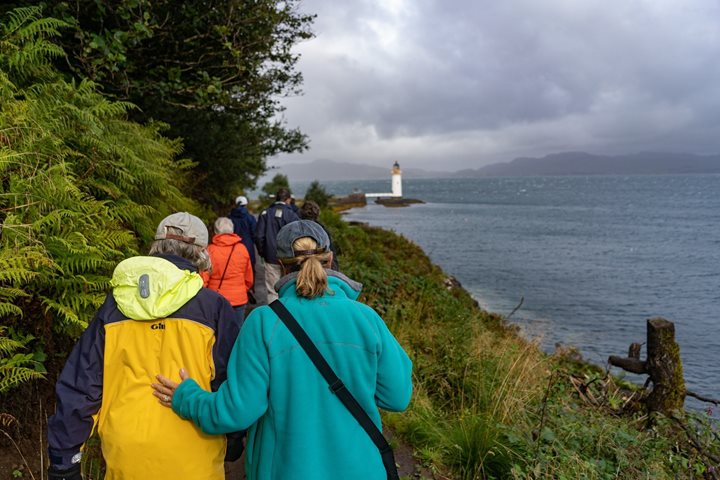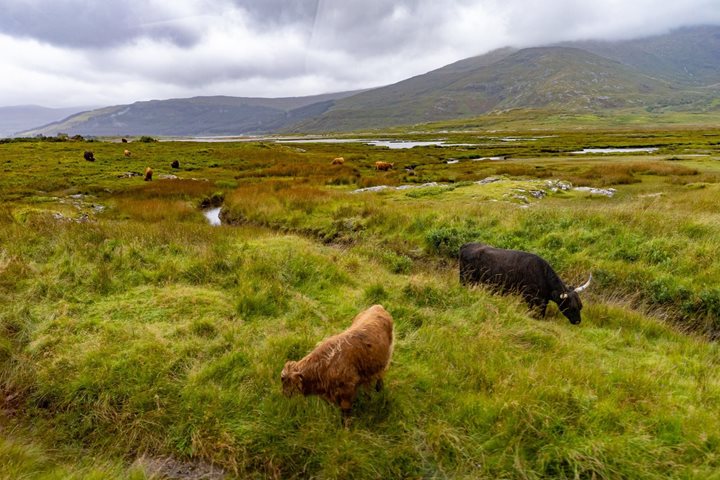We departed Oban on a gray, calm morning, crossing the Sound of Mull on silky seas where any creature could easily be seen. Guillemots, shearwaters, and the occasional gannet passed by, followed by a few dolphins who quickly disappeared behind the boat. We sailed by Duart Castle, a massive structure perched on the coast, looking quite atmospheric in the morning mist. Shortly after, Lord of the Glens landed at Craignure on the Isle of Mull, where our journey to Iona began.
We disembarked and boarded a bus, traveling across Mull on narrow, one-lane roads where pullouts allow vehicles to pass each other. Our bus driver gave an informative overview of the history and wildlife of Mull as we passed through the Isle’s high mountains and green glens. The bus dropped off us at the village of Fionnophort to catch the small ferry that traverses the channel to the Isle of Iona. We had most of the day to explore this beautiful and historically significant site.
Many people comment, “There is something about Iona,” when they arrive on the island, and our group felt the special quality of the place. In 563 A.D., St. Columba came to Iona from Ireland and established a monastery, bringing Celtic Christianity to Scotland. During the 13th century, Iona became home to the Benedictines, and the great abbey and nunnery were constructed. Pilgrims still come to Iona, finding peace on this special isle. Our group took full advantage of our day on Iona. Everyone had time to walk the abbey grounds, wandering through the cloisters and beautiful heart of the abbey. Some made the tough trek to the summit of Dun I, the highest point of the island. The hike up the steep, rocky trail was well rewarded by inspiring views over Mull and the surrounding small isles, with a good view of the abbey and small village on Iona.
In the afternoon we boarded the bus back to Craignure with a stop at Duart Castle, the imposing building we had passed on our morning sail. Duart is the Maclean Clan’s ancestral home and was built in the mid-1200s. The Macleans lost the castle in the first Jacobite uprising in the 17th century, and the building fell to ruins, only to be restored in the early 1900s. It is currently used both as a residence and a museum, where we could visit the rooms of the castle, including the dark dungeon where a prisoner (yes, a dummy) was held captive.
From Duart, it was back to Lord of the Glens and a beautiful evening voyage to Tobermory. On the way, Robin told us about her time working on Iona as a volunteer, showing photographs of some of the more remote places on the island. Safely moored at Tobermory, we enjoyed an informative talk by the group Wings over Mull who rescues and rehabilitates birds of prey on Mull. Once again, it was an inspiring day of natural beauty and historical interest.







